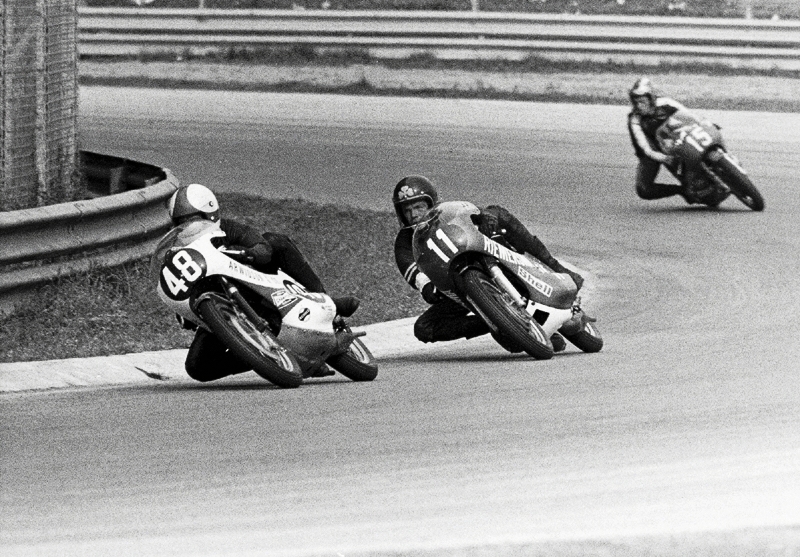Jarno Saarinen, a name that resonates with reverence in the world of motorcycle racing, was a Finnish icon born on December 11, 1945, in Turku, Finland. His short but illustrious career in Grand Prix motorcycle racing left an indelible mark on the sport and its safety standards. Let’s pay homage to this extraordinary rider, whose legacy lives on as the only Finn to have won a motorcycle road racing world championship.
The Early Years
Jarno Saarinen’s journey into the world of motorcycles began as an apprentice and test-rider for Tunturi-Puch in Turku when he was just 15 years old. He cut his teeth in the racing world on ice and grasstrack circuits, showcasing his natural talent. In 1965, he clinched the 250cc Finnish ice racing national championship, demonstrating his prowess across various disciplines, including speedway racing.
Grand Prix Debut and Rapid Rise
Saarinen’s Grand Prix debut in 1968 at Imatra saw him finish 11th in the 125cc category. His rapid rise continued as he won both the 125cc and 250cc Finnish motorcycle national championships in 1969, all while acting as his own mechanic. His unique riding style, with his chest just above the fuel tank and a distinctive approach to curves, set him apart.
The Saarinen Era Begins
1971 marked a pivotal year in Saarinen’s career. Riding for Yamaha, he secured his first 350cc Grand Prix victory in Czechoslovakia, and in the same season, he triumphed in the 250cc class in Spain. Saarinen’s versatility shone through as he finished third in the 250cc World Championship and second in the 350cc class, following in the footsteps of Giacomo Agostini.
Yamaha’s Faith and Triumph
Yamaha recognized Saarinen’s potential and signed him for the 1972 season. His victory in the 250cc World Championship marked a historic moment, as he went head-to-head with renowned riders like Renzo Pasolini and Rod Gould. Saarinen’s dominance continued with a victory at the German Grand Prix and a double win at the Czechoslovakian Grand Prix. His success was a catalyst for MV Agusta to produce a new 350cc motorcycle for Agostini.
A Triumph in the USA and Ongoing Dominance
The 1973 season started magnificently for Saarinen. He became the first European rider to win the prestigious Daytona 200 race in the United States on a Yamaha TZ 350, defeating larger capacity motorcycles. He then claimed victory at the Imola 200, further solidifying his reputation as a global motorcycle racing sensation.
Saarinen’s 1973 Grand Prix season was characterized by an early lead, with wins in the French and Austrian Grand Prix races. He was poised to achieve greatness in both the 250cc and 500cc categories.
The Tragedy of Monza
Tragedy struck at the 1973 Nations Grand Prix in Monza, Italy. During the 250cc race, a horrific crash claimed the life of Renzo Pasolini, and cruel fate of luck had his motorcycle bounce back to the track, striking Saarinen and causing a fatal head injury. Loss of two great riders devastated and shook the motorcycle racing community, but some faint amelioration could be found as the memory of both riders lived on as a catalyst for increased safety measures and improved conditions for racers.
Legacy and Impact
In the wake of the Monza tragedy, the motorcycle racing community, including major racing teams, demanded safer conditions for racers. This event, along with other tragic incidents, led to significant changes in safety standards, racetrack design, and the organization of Grand Prix races.
Jarno Saarinen’s legacy endures, with streets named after him and bronze statues erected in his honor in both Italy and in his home country Finland. The IRRC roadracing circuit in Imatra, Finland also bears his name, fittingly as it was a track that he triumphed on many times on his career. In many ways, his memory lives on as an inspiration to future generations of motorcycle racers.
In 2009, Jarno Saarinen was posthumously inducted into the F.I.M. MotoGP Hall of Fame, a testament to his enduring influence on the sport. He remains a symbol of determination, talent, and the pursuit of excellence in motorcycle racing.

